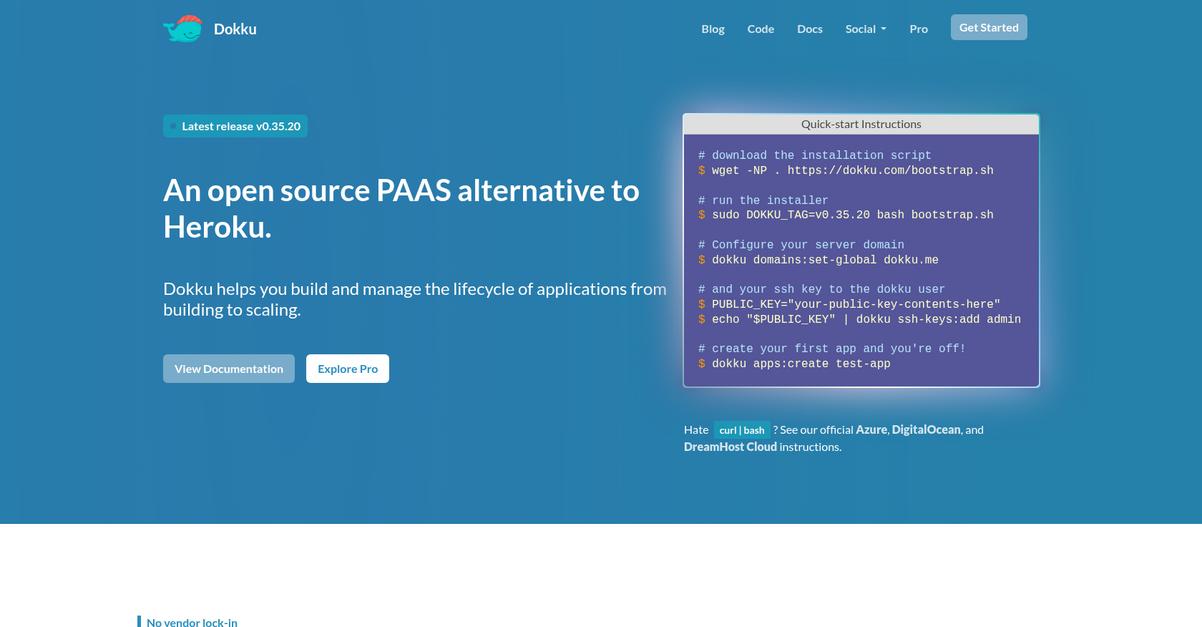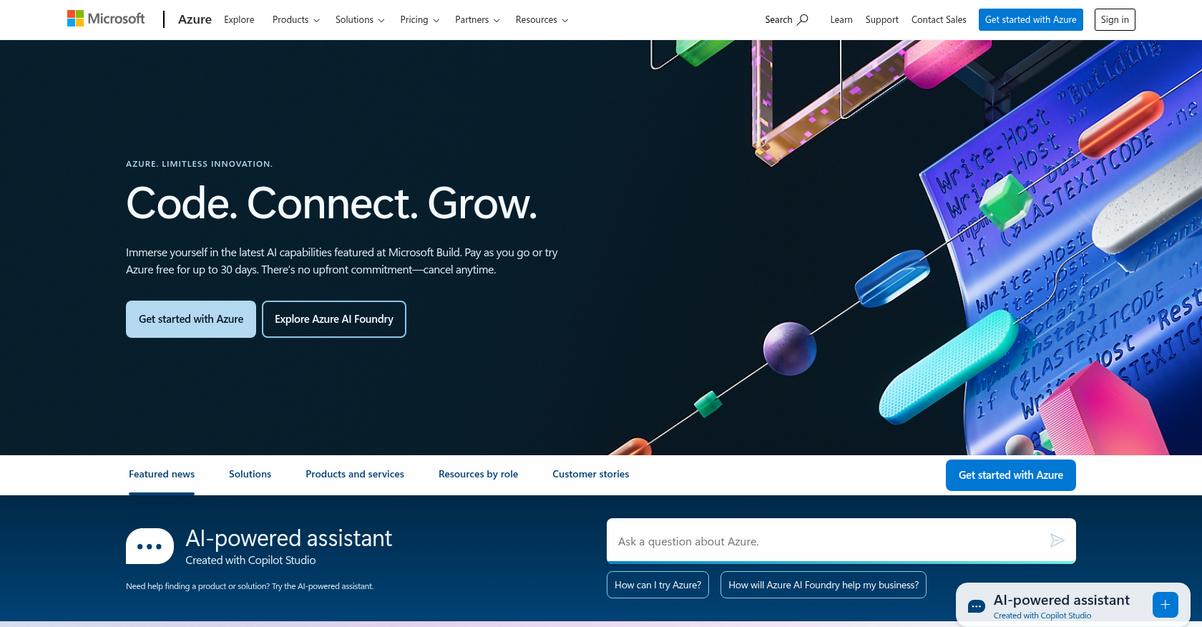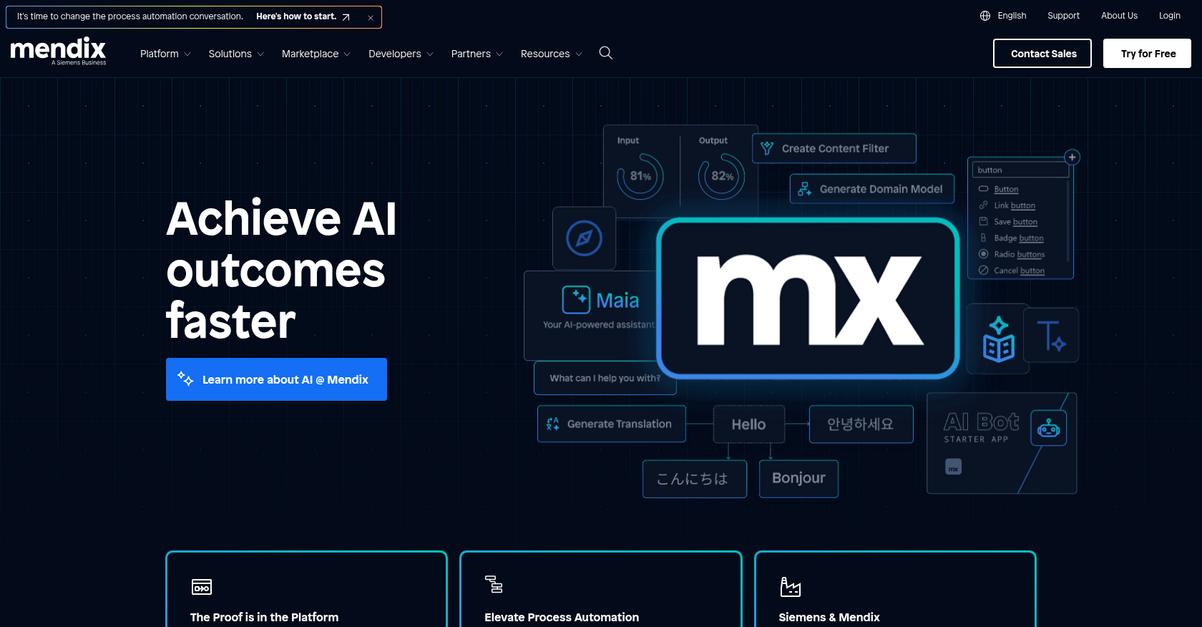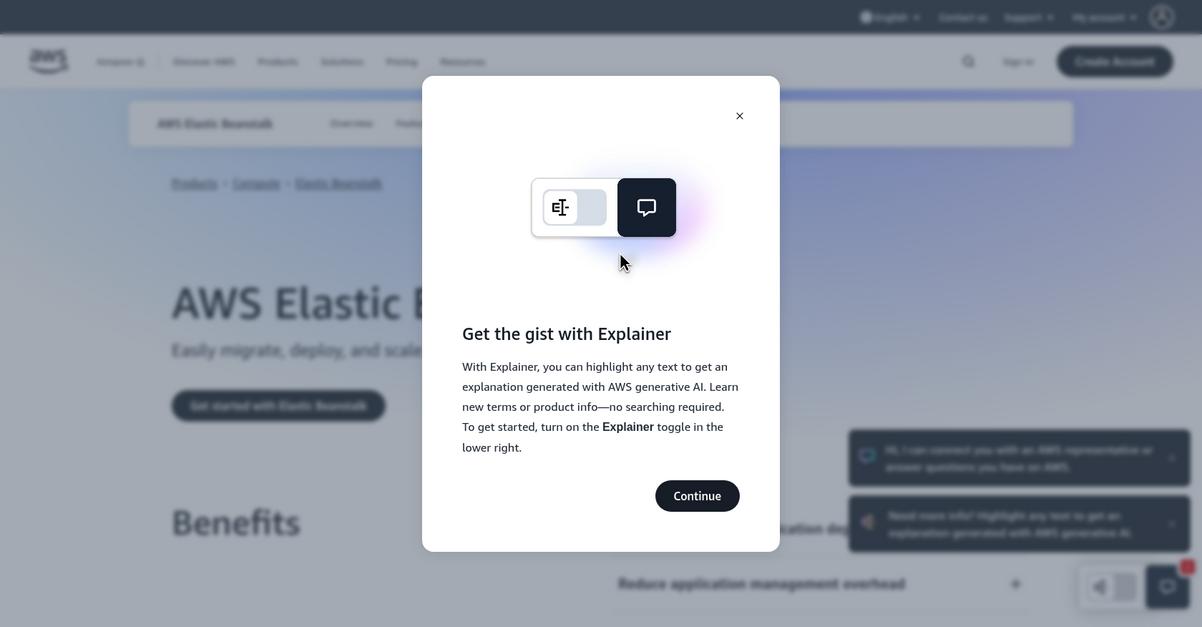Drowning in PaaS options?
Choosing the right Platform-as-a-Service tool can feel impossible. Every vendor makes similar promises, but their marketing claims all sound the same.
This information overload creates serious decision anxiety. You fear making a choice that creates expensive switching pains later on.
Justifying the cost and technical risks to your C-suite is a huge challenge. Without a clear view of features and ROI, you risk picking a tool that simply won’t scale.
But what if you had a clear, unbiased guide? This article is designed to help you cut through the vendor clutter.
In this article, I’ll walk you through the best PaaS tools. We’ll focus on what really matters: transparent pricing, scalability, and solid integration capabilities.
You’ll gain the clarity needed to confidently select a platform that simplifies workflows and accelerates deployment for your entire development team.
Let’s get started.
Quick Summary:
| # | Software | Rating | Best For |
|---|---|---|---|
| 1 | Qovery → | Scaling SaaS mid-market firms | |
| 2 | Dokku → | Scaling SaaS mid-market firms | |
| 3 | Microsoft Azure → | Scaling SaaS mid-market firms | |
| 4 | Mendix → | SaaS scaling IT managers | |
| 5 | AWS Elastic Beanstalk → | SaaS scaling IT managers |
1. Qovery

Struggling with complex, fragmented development environments?
Qovery is a DevOps Automation Tool specifically designed to eliminate your DevOps hiring needs.
This platform allows you to provision and maintain a secure infrastructure in hours, not months, freeing your team from manual work.
Here’s how Qovery simplifies your operations.
Qovery introduces self-service for developers, eliminating manual DevOps work by automating infrastructure provisioning into ready-to-run environments. This means you can say goodbye to redundant manual tasks for application development, QA, and IT operations, accelerating your project timelines.
Additionally, it offers extensive integrations with your existing tools, including monitoring, CI/CD, and security solutions, ensuring a seamless experience. Plus, Qovery emphasizes governance with custom policies, security features like multi-factor authentication, and significant cost optimization measures that can reduce cloud expenses by up to 57%.
The result: higher engineering efficiency and faster deployments.
While streamlining your technical operations is crucial, managing your team’s availability is equally important. My guide on clear leave visibility can assist.
Key features:
- Automated Environment Provisioning: Eliminates redundant manual work by automating infrastructure asset provisioning for development, QA, and operations.
- Self-Service & Integrations: Empowers developers with self-service control over infrastructure, integrating seamlessly with over 125 existing tools and workflows.
- Cost Optimization & Security: Offers various measures to reduce cloud costs by up to 57%, alongside robust security features like fine-grained access controls.
Qovery features, pricing, & alternatives →
Verdict: Qovery is a top contender for the best PaaS tools, simplifying complex DevOps and accelerating deployments by 5x. It reduces overall engineering time by 30% and cloud costs by 57%, making it ideal for scaling SaaS and mid-market tech firms.
2. Dokku

Struggling with fragmented development environments and vendor clutter?
Dokku, an open-source PaaS alternative to Heroku, helps you build and manage the entire lifecycle of your applications. This means it tackles the challenge of complex deployments by simplifying the process.
You can take ownership of your PaaS using familiar tools, avoiding costly vendor lock-in.
Transitioning to your own PaaS just got easier.
Dokku solves the pain of scaling and deploying applications by letting you push Heroku-compatible applications via Git. These applications build using Heroku buildpacks and then run in isolated containers. You get a single-host version of Heroku, simplifying your infrastructure.
Getting started is extremely easy with Dokku, allowing you to create, deploy, and scale applications quickly. Additionally, Dokku is highly extensible and customizable through plugins, letting you add the specific features your team needs. You can write plugins in any language, extending Dokku’s capabilities and ensuring it perfectly integrates with your existing stack.
This capability significantly reduces the fear of picking tools that won’t scale.
While we’re discussing simplifying development, understanding best reference management software is equally important for documentation.
Key features:
- Application lifecycle management: Helps you build, deploy, and scale applications efficiently, ensuring smooth operations from development to production.
- Heroku-compatible deployments: Allows you to push applications via Git, utilizing Heroku buildpacks for isolated containerized execution.
- Extensible plugin architecture: Enables customization and feature expansion with plugins written in any language, ensuring flexibility and integration with your specific workflows.
Dokku features, pricing, & alternatives →
Verdict: If you’re seeking to simplify workflows and accelerate deployment without vendor lock-in, Dokku is one of the best PaaS tools available. Its ease of use and customizable nature make it ideal for scaling SaaS companies and mid-market tech firms.
3. Microsoft Azure

Struggling with fragmented development environments and vendor clutter?
Microsoft Azure provides a unified, open platform for building and modernizing intelligent applications, including AI-powered solutions. This means you can accelerate app and data estate readiness for AI innovation.
You can confidently scale the next generation of safe, responsible AI applications with Azure AI Foundry, which offers an integrated toolchain, orchestration, and pre-built templates. This helps your team build apps that were previously impossible.
Here’s how Azure empowers your team.
Microsoft Azure offers fully managed, flexible databases like Azure Cosmos DB to build or modernize scalable, high-performance apps, alongside migration tools for Windows Server, SQL Server, and Linux. This helps you unify on-premises, hybrid, and cross-cloud infrastructure with Azure Arc, eliminating the need to manage diverse environments separately. Additionally, Azure Kubernetes Service (AKS) allows you to build and scale apps with managed Kubernetes, simplifying container orchestration.
You can also leverage Azure DevOps for shared code, work tracking, and modern development services, ensuring continuous delivery of value. This comprehensive suite ensures you can respond to changes faster, optimize costs, and ship confidently.
Your development becomes more agile and efficient.
If you’re also looking for ways to streamline security and cut costs, my article on best endpoint management software is a valuable resource.
Key features:
- Azure AI Foundry: Build, evaluate, and deploy generative AI solutions and custom agents with an integrated toolchain and pre-built templates.
- Azure Kubernetes Service (AKS): Seamlessly build and scale applications with managed Kubernetes, simplifying container deployment and management for your team.
- Azure DevOps: Consolidate code sharing, work tracking, and software shipping, bringing together your people, processes, and products for continuous delivery.
Microsoft Azure features, pricing, & alternatives →
Verdict: Microsoft Azure stands out among the best PaaS tools by offering robust AI capabilities, flexible database solutions, and comprehensive DevOps features. Fujitsu boosted productivity by 67% using Azure AI Foundry Agent Service, demonstrating its potential for significant operational improvement and innovation in your scaling SaaS or mid-market tech firm.
4. Mendix

Struggling with fragmented development environments and vendor clutter?
Mendix provides a low-code application development platform designed to simplify complex software creation. This platform unifies your development processes, reducing information overload and decision anxiety.
The platform’s unified environment and governance by design capabilities ensure that you can control everything with built-in DevOps tools, helping to accelerate deployment with consistency and speed across your organization.
Here’s how you can achieve AI outcomes faster.
Mendix helps you mobilize your organization to deliver high-value software portfolios by leveraging AI-powered development, including AI-assisted and GenAI features. This empowers your teams to build sophisticated smart applications faster and more easily.
You can streamline development with a powerful, open, and extensible platform, thanks to Mendix Studio Pro IDE, which gives your developers the tools to work efficiently. Additionally, Mendix provides complete cloud choice with single-click deployment to any cloud, ensuring high availability, robust security, and maximum reliability for your apps. This composable approach, supported by strategic partnerships and a curated library of integrations, lets you expand your digital ecosystem seamlessly.
Ultimately, you can deliver measurable ROI and business agility quickly.
While optimizing core development, remember that specialized tools can also boost efficiency. My guide on best laboratory information management system provides further insights.
Key features:
- AI-powered development: Accelerate delivery of sophisticated AI-augmented applications with AI-assisted and GenAI capabilities for smarter, faster development.
- Complete cloud choice and governance: Deploy with confidence to any cloud environment, backed by robust security and out-of-the-box governance tools for compliance.
- Extensive integrations and marketplace: Connect to data, applications, and third-party services with out-of-the-box connectors and a rich marketplace of widgets, modules, and templates.
Mendix features, pricing, & alternatives →
Verdict: For IT managers and CTOs at scaling SaaS companies, Mendix stands out among best PaaS tools by offering a low-code platform that simplifies complex workflows, accelerates deployment, and integrates with existing stacks, supported by AI and comprehensive governance.
5. AWS Elastic Beanstalk

Struggling with complex application deployments and scaling?
AWS Elastic Beanstalk simplifies full-stack application deployment by allowing you to upload your code without managing resources. This means you can reduce application management overhead significantly.
Here’s how it runs your code with automated platform updates, security patches, and built-in health monitoring, letting your developers focus purely on business logic. The result is improved security, scalability, and availability.
You can deploy secure, scalable applications with built-in high availability, automatic scaling, and integrated security controls. This means you gain managed service benefits at no extra cost, paying only for the resources you use.
For organizations new to AWS or those needing simple container application hosting, Elastic Beanstalk provides a straightforward path. It allows you to deploy secure, scalable applications with ease, whether migrating traditional web applications or running individual Docker containers. Additionally, the service automatically handles infrastructure provisioning, load balancing, and health monitoring, freeing your teams from operational burdens. Plus, it manages platform updates and patching, allowing your business to focus on its application code rather than infrastructure management.
It’s about streamlining your development workflow.
Key features:
- Full-stack application deployment: Easily migrate, deploy, and scale full-stack applications on AWS by simply uploading your code, eliminating manual resource provisioning.
- Automated platform management: Benefit from automated platform updates, security patches, and built-in health monitoring, significantly reducing your application management overhead.
- Built-in scalability and security: Deploy secure and highly available applications with automatic scaling and integrated security controls, ensuring your applications perform robustly.
AWS Elastic Beanstalk features, pricing, & alternatives →
Verdict: For IT managers and software leads at scaling SaaS companies seeking the best PaaS tools, AWS Elastic Beanstalk offers a compelling solution. Its focus on simplifying deployment, reducing overhead, and providing built-in scalability makes it an excellent choice for migrating traditional web applications or hosting simple containers without deep cloud expertise.
Conclusion
Feeling lost in a sea of PaaS tools?
I know the feeling. Choosing the wrong platform can lock your team into expensive switching pains and derail your roadmap, creating massive technical debt.
This decision paralysis is real, and it’s a huge risk for your business. It’s not just about features; it’s about finding a truly scalable partner that grows with you and doesn’t hold you back.
Here’s what I’d recommend instead.
After reviewing all these options, Qovery stands out as the clear winner. It directly tackles vendor clutter by automating infrastructure and freeing developers to innovate.
It’s proven to accelerate deployments by 5x while reducing engineering time. When you evaluate the best PaaS tools, that measurable impact on efficiency and cost is undeniable.
For comprehensive financial management, my article on best SaaS billing software offers insights on predicting cash flow and managing complex pricing.
I suggest you start a free trial of Qovery to see how it can transform your team’s productivity firsthand.
Your whole development cycle will accelerate.






